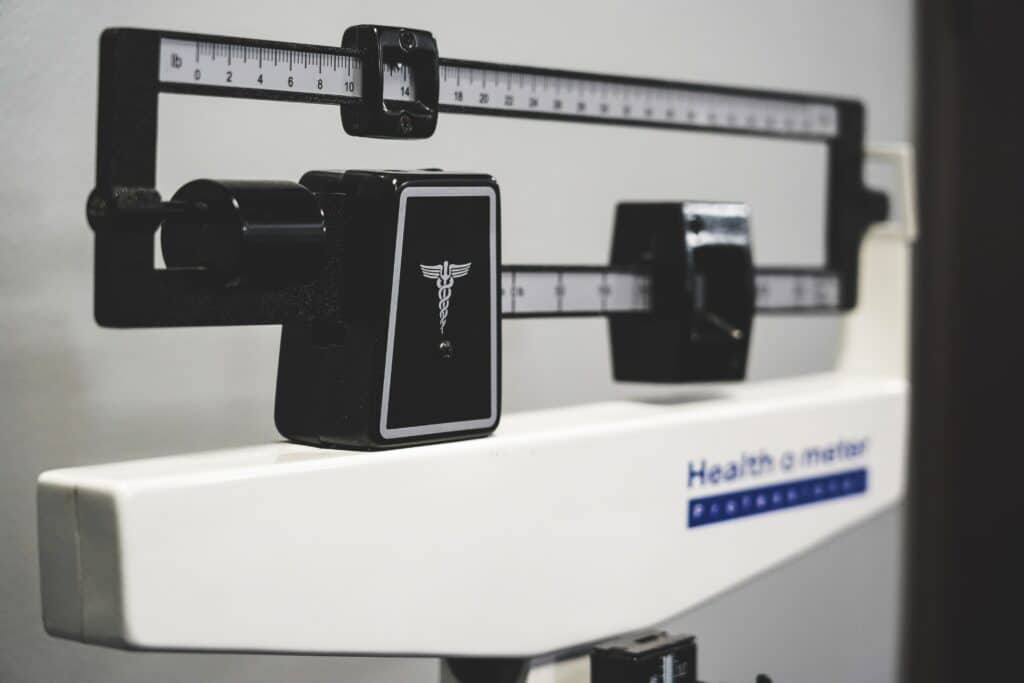It’s no secret that the rates of obesity continue to increase in the US; the latest information from the CDC estimates national rates at ~42%. Obesity is a major contributor to both morbidity and mortality – as well as a significant economic burden with ~$173 billion spent annually in direct and indirect costs.
Table of Contents
Despite this, a low percentage of individual who are obese discuss obesity management with their health care provider. Unfortunately, there are clear barriers to obesity care including patient stigmatization (“it’s a choice, not a disease”), provider comfortability with counseling (dietary, movement, etc) and treatment (including medications and surgical options), and access to care (many individuals nationally don’t even have a primary care provider).
Patients who are interested in weight loss (always among the top 3 goals for new years resolutions!) are frequently left to fend for themselves or resort to other methods for help (internet, social media, friends). Healthcare providers must become more proactive and educated to ensure patients’ needs are met as this disease state continues to increase.
While other chronic metabolic disease states – such as hypertension and diabetes – have multiple treatment options, long-term FDA approved obesity and weight management pharmacotherapy options are limited and include: liraglutide (Saxenda©), semaglutide (Wegovy©), bupropion/naltrexone (Contrave©), orlistat (Alli©, Xenical©), and phentermine/topiramate (Qysmia©). Until recently, weight management pharmacotherapy options had varying success ranging from approximately -3% to -8% body weight(1) lost. Newer agents – the GLP1 agonists – have demonstrated increased success with studies showing weight loss rates of -6% to over -15%. This improvement in results make the GLP1 agents an attractive option, especially as side effects are frequently only GI related (nausea, diarrhea, constipation, etc).
In practice, we must start seeing these medications as we would for other chronic disease states – as a useful tool and to be used chronically. Obesity is not a symptom of laziness. If a patient presented to a primary care clinic with an HbA1c of 11%, we would have a discussion of pharmacotherapy options. While lifestyle modifications would also be part of the conversation, a majority of patients would also leave the appointment with a new prescription. The same could be said of any chronic disease state – COPD, asthma, hypertension, hyperlipidemia….the list goes on and on. Lifestyle modifications are beneficial in all but frequently not the full story. Obesity management should be no different. We as healthcare providers have a responsibility to our patients to start these conversations, be comfortable with management and prescribing, and aid in patients’ journey for weight loss.
While we as providers frequently think in terms of quantity metrics for weight loss benefits (HbA1c and blood pressure lowering, total weight lost, etc.), individuals consistently remind me of the QUALITATIVE benefits that are not reported in studies. It is extremely enriching as a pharmacist to hear about how life is impacted with weight loss. Grandparents talking about how they are better able to move and play with their grandchildren. A soon to be bride who feels confident in her wedding dress. One patient of mine who has been on semaglutide for four months noted – “I have never been able to lose weight. The medication helps with tackling what had been a life long struggle with very minimal side effects. I feel I can move easier, breathe easier….I don’t feel as old. It’s been a game changer.”
Therapy Options
Given there are limited options to prescribe, it is very exciting to know there are a handful of therapy options currently being studied and are in the pipeline. One to keep close eye on is tirzepatide (already approved for diabetes under brand name Mounjaro©) as Eli Lilly submitted for FDA approval for obesity earlier this year. Results from a study in the NEJM published in 2022 were extremely promising with reported weight loss on average of -15% to -20.9% depending . Other medications are currently in the pipeline in phase II and III trials.
Prescribing GLP1s For Weight Management
In my practice, I have successfully utilized and prescribed GLP1s for weight management. Patients frequently tolerate these medications with limited issues. The most common side effect I have heard at follow up is nausea with some vomiting. This frequently occurs with therapy initiation and/or with dose increases. For this reason, I do not increase dosing more frequently than every 2-4 weeks, depending on the agent.
This side effect mechanically makes sense given GLP1s slow our gastric emptying – making us feel fuller longer, leading to weight loss. When starting therapy, I encourage individuals to do the “half-plate method” – eat half of your plate, pause, and determine if you are physically still hungry. This is an act of mindfulness. If after a few minutes you still are, continue. If not – stop.
This helps not only avoid nausea but also with weight loss! While the studies show the medication can take 3-4 weeks to see satiety changes, I have had patients note changes in appetite as soon as after the first dose. Additionally, interestingly, I also have had patients note certain food aversions when initiating the therapy – such as red meat. I encourage all patients to be mindful and try to track this to also aid in food selection.
Barriers To Overcome, Cost & Insurance Coverage
One of the biggest difficulties I face when prescribing these medications is cost and insurance coverage. While I am seeing some payers start to provide coverage, this is often not the case and limited to private insurance (Medicare does not currently cover and Medicaid is state specific).
This can be particularly frustrating for patients who are actively trying to seek help. While there are coupons available, out of pocket costs can still be significant. For example, while the GLP1s for weight loss have coupons, there is a cap or “maximum savings amount”; as a result, in my experience, many individuals are left with $500+ per month copays. Additionally, many insurances have started to require prior authorizations to reduce off label use of GLP1s not approved for weight loss (I.e. semaglutide – Ozempic©, dulaglutide – Trulicity©, etc.).
This process has placed an additional burden on community pharmacists who may start to see a retrospective denial/re-imbursement if used off-label. For some of the medications (I.e. the combination medications like bupropion/naltrexone — Contrave©), we can prescribe the individual components which can assist with cost savings for patients.
Pharmacist Education On Obesity Management
I encourage all pharmacists to educate themselves on obesity management. This is a significant gap in our healthcare system with a growing patient population seeking and/or needing care. Pharmacists and other providers are in an ideal position to make a big difference!
Sources:
(1) Shi. Lancet. 2022;399:259






